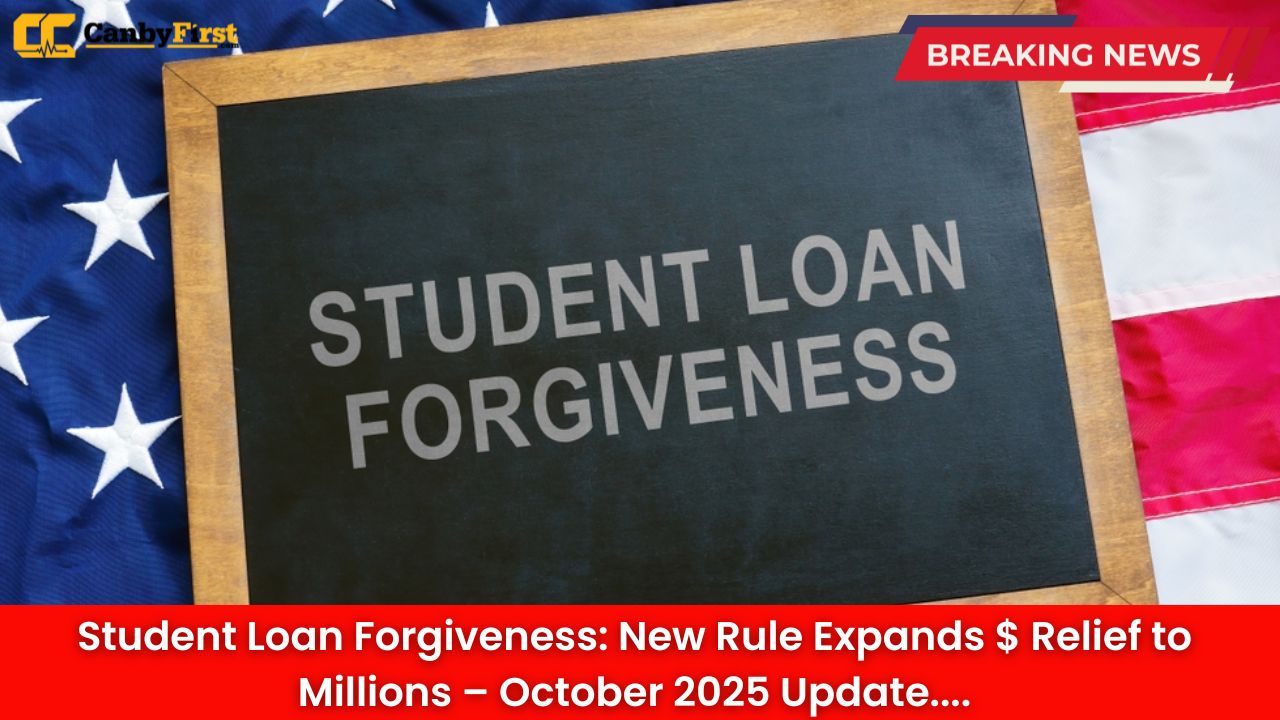In a sweeping move that could reshape the landscape of higher education debt, the Biden administration has unveiled a new rule this October that expands student loan forgiveness to millions of borrowers. The decision marks one of the most significant steps in federal student loan policy in recent years, offering long-awaited financial relief for graduates burdened by mounting debt.
The New Rule Explained
The Department of Education’s latest rule is designed to simplify forgiveness pathways while broadening eligibility for those who may not have previously qualified. The initiative primarily targets borrowers enrolled in income-driven repayment (IDR) plans, public service workers, and individuals who have been paying student loans for over two decades without meaningful progress in reducing their balances.
Under the new framework, certain borrowers will see immediate debt cancellation, while others will gain access to accelerated timelines for payoff forgiveness. For many, this will translate into thousands of dollars in financial relief, easing monthly obligations and offering a clearer road to long-term stability.
Also Read
Expanded Eligibility for Borrowers
Previously, only a narrow set of borrowers—public service workers, teachers, and those in specific forgiveness programs—were eligible for significant debt cancellation. The October 2025 rule dramatically expands the pool by:
-
Allowing borrowers with older federal student loans to qualify, even if they did not meet strict repayment plan requirements.
-
Granting partial forgiveness to those who have made payments for at least 10 years under qualifying plans.
-
Recognizing more repayment efforts, including late or partial payments, toward forgiveness thresholds.
-
Extending benefits to Parent PLUS borrowers, a group often left out of earlier forgiveness programs.
Relief by the Numbers
According to administration estimates, nearly 4.8 million borrowers will experience some form of debt cancellation under the new rule within the next two years. Of these, about 1.5 million are expected to see their balances wiped entirely. The average amount of forgiveness per qualifying individual is projected to range between $12,000 and $20,000, depending on loan type and repayment history.
This broad relief comes as federal student loan repayments resumed this year after multiple pandemic-era pauses. Officials argue the move was necessary to prevent millions of Americans from falling into delinquency or default.
Impact on Public Service Workers
The new rule also strengthens the Public Service Loan Forgiveness (PSLF) program, which has faced criticism for years due to confusing requirements and widespread rejections. Teachers, healthcare workers, military service members, and other public servants will benefit from a streamlined process that reduces red tape and accelerates timelines for forgiveness.
Borrowers who have devoted at least a decade to public service while making qualifying payments will now find it easier to have their outstanding balances erased. This change is expected to incentivize more graduates to pursue careers in critical public sectors without the looming weight of lifelong debt.
Economic and Political Implications
Economists are divided over the broader financial impact of this policy. Supporters argue that erasing billions in student debt will free up consumer spending, stimulate housing markets, and reduce wealth inequality. Critics, on the other hand, warn of potential costs to taxpayers and believe the ruling could set precedents for future debt relief demands.
Politically, the move is seen as a key talking point ahead of the 2026 midterm elections. Advocates hail it as a long-overdue step toward fairness in higher education, while opponents question its reach and fiscal responsibility. The Biden administration has indicated that further reforms may follow if lawmakers continue to push for broader cancellation measures.
Borrower Reactions
Across the country, borrowers are voicing relief, joy, and in some cases, disbelief. Many had resigned themselves to the idea of carrying debt well into their retirement years. With forgiveness pathways widened, young professionals now see increased opportunities to buy homes, start families, and invest more confidently in their futures.
Still, some borrowers remain frustrated that the program does not extend benefits universally. Others are concerned about the complexity of navigating revamped rules and the potential delays in implementation. The Department of Education has promised clearer communication and digital tools to guide individuals step by step through the process.
What Borrowers Should Do Now
For those hoping to benefit from the expansion:
-
Review your current loan status through the official federal student aid portal and check eligibility.
-
Apply for consolidation if you have multiple loan types that need to be streamlined.
-
Confirm enrollment in an income-driven repayment plan if you are not already in one.
-
Keep documentation of payment records to ensure credit toward forgiveness.
The Department of Education is expected to begin automatic cancellations for eligible borrowers in the coming months, with manual applications available for those who must submit additional information.
Looking Ahead
As student loan forgiveness evolves, higher education financing remains at the center of national debate. While the October 2025 rule brings immediate relief to millions, experts stress that it does not address the root issue: the rising costs of attending college. Without comprehensive reforms to curb tuition hikes and reduce reliance on debt, future generations could face the same uphill battle.
For now, those receiving forgiveness will experience a rare reprieve, marking a milestone moment in the country’s ongoing struggle with student debt.
FAQs
1. Who qualifies for the new student loan forgiveness rule?
Borrowers in income-driven repayment plans, public service workers, those with long-term repayment histories, and Parent PLUS borrowers may now qualify.
2. How soon will borrowers see relief?
Many will experience automatic cancellation within the next few months, while others may need to submit applications.
3. Does the rule apply to private student loans?
No, the forgiveness expansion only applies to federal student loans backed by the government.
4. What is the average amount being forgiven?
The average relief ranges from $12,000 to $20,000, though some borrowers may see their entire balance eliminated.
5. Will college costs be addressed by this rule?
No, this policy focuses solely on loan forgiveness. Broader reforms regarding tuition costs are still under discussion.












